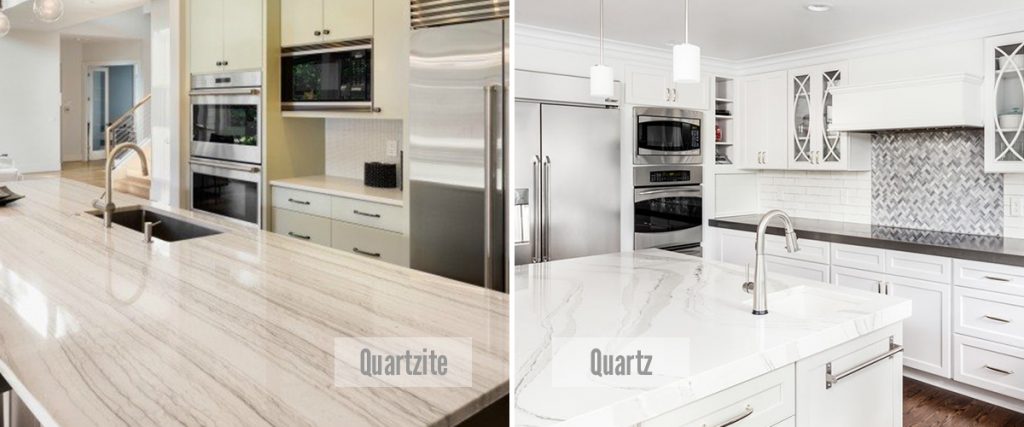QUARTZ: MINERAL AND COUNTER TOP
In
geology, “quartz” refers to one of the most abundantly occurring minerals in
Earth’s surface. More strictly speaking, it refers to the chemical
compound silica, i.e. silicon dioxide (SiO2). When looking at quartz as a
mineral, you’ll find that granite, onyx, quartz, slate and soapstone
countertops all contain the mineral quartz in varying degrees.
But when we speak of quartz countertops in the stone industry, we are
talking about a manufactured product, sometimes referred to as “engineered
stone.” Quartz countertops are produced by using loose
quartz, mineral pigment and an industrial resin binder. Since
there is over 90% of loose quartz content in quartz countertops, the stone
industry simply refers to these surfaces as “quartz.”
QUARTZ: FEATURES
Given that
quartz surfaces are man-made, they come in any color and pattern imaginable.
Keep in mind, though, that quartz countertop patterns are often more uniform
and repetitive than the patterns of natural stones. Since industrial resin
binds the quartz minerals together, the countertop’s surface is non-porous and
requires no sealing; however, quartz countertops are sensitive to heat above
300 degrees Fahrenheit. In addition, quartz is more flexible than quartzite,
less prone to chipping, and out of all the surfaces, maintaining quartz
countertops is by far the easiest.
WHAT IS QUARTZITE?
Quartzite
is a naturally occurring metamorphic rock that
began its life as pure quartz sandstone. Over millions of years, sandstone
morphs into quartzite under the extreme pressure and heat underneath the
surface of the Earth.
QUARTZITE: FEATURES
Due to its
natural origins, no two slabs are the same. The color range of quartzite
countertops usually falls within the white, gray and beige
spectrum. However, pink and red hues are common due to the iron oxide in
the stone, as well as yellow, blue, green and orange hues that are a result of
other naturally present minerals. Because of the subterranean pressure
that helps form quartzite, the slabs have streaked patterns similar to marble.
Quartzite is heat resistant and slightly harder than granite. Quartzite
surfaces are sometimes porous, which means that they require periodic sealing
and more meticulous care than quartz surfaces.
CONCLUSION
Both quartz and quartzite are great for kitchens and
bathrooms. But with any stone, the question is not about which material is
better. Rather, the question is which stone is more suited for your needs.
Both quartz (Mohs scale of mineral hardness: 7) and quartzite (Mohs: 7-8) are
comparable and often harder than granite (Mohs: 6.5-7). With quartz, you
get a low-maintenance surface that comes in a myriad of colors, even though it
isn’t fully heat resistant. With quartzite, you get the unique look of natural stones
and a harder, more durable surface, although periodic sealing is suggested. In
terms of pricing, it all depends on the project at hand. However, if there
are a lot of small details in your design, quartzite might put a heavier strain
on your purse, given that the stone’s hardness usually translates into more
labor.
| QUARTZ | QUARTZITE | |
| Source | Man-made | Natural |
| Color | Large spectrum | White, gray and beige |
| Pattern | Any pattern | Similar to marble |
| Natural streaks | ||
| Hardness | Mohs Scale: 7 | Mohs Scale: 7-8 |
| Maintenance | Minimal care | Simple care |
| No sealing required |
Requires periodic sealing |
|
| Heat resistant | No | Yes |


